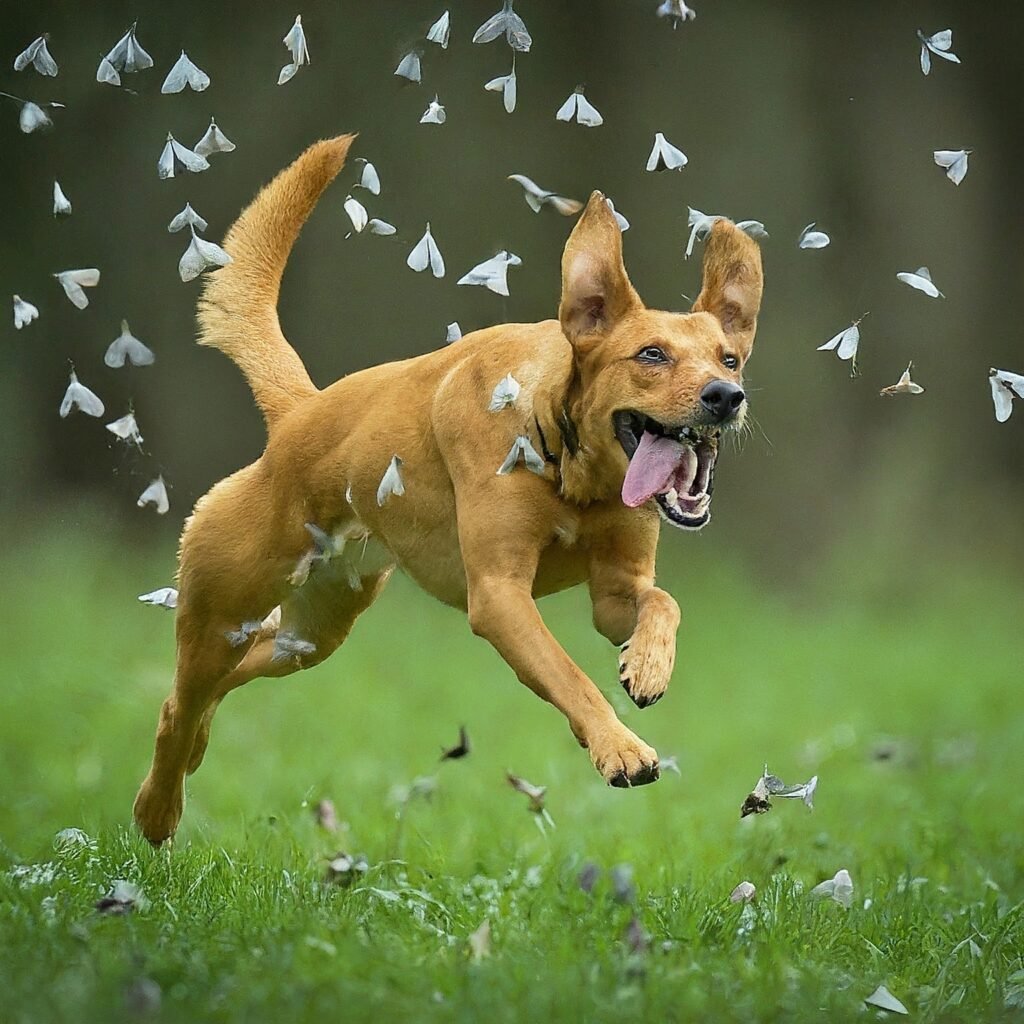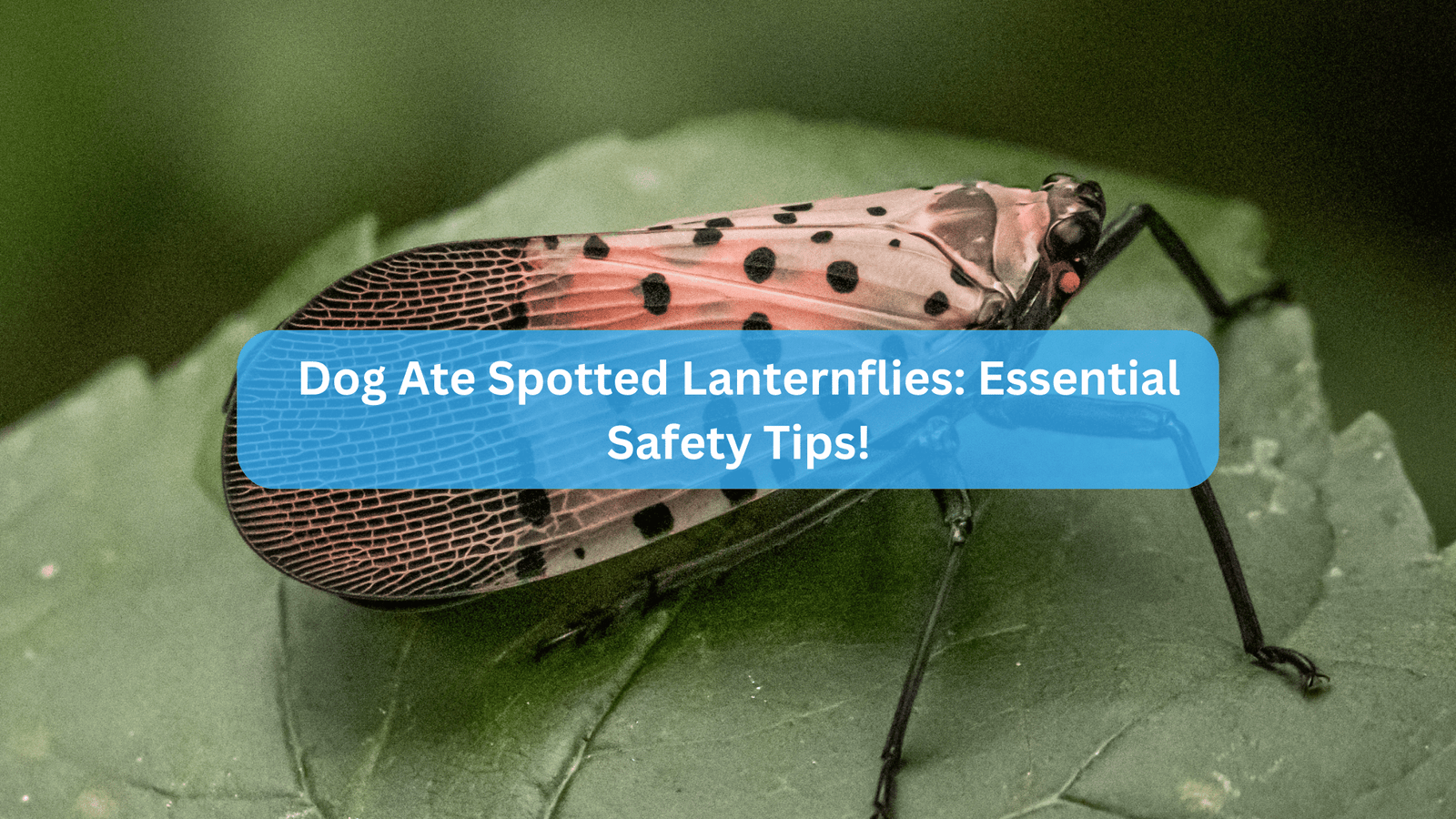As the spotted lanternfly (Lycorma delicatula) continues to invade various regions of the United States, many pet owners are left wondering about the safety of their furry companions. This article aims to provide a comprehensive overview of the spotted lanternfly, its effects on dogs, and what to do if your Dog Ate Spotted Lanternflies.
Understanding the Spotted Lanternfly
The spotted lanternfly is an invasive planthopper native to parts of Asia, including China and Vietnam.
It was first identified in the United States in 2014 and has since spread rapidly, causing significant damage to agricultural crops and ornamental plants.
The insect primarily feeds on the sap of over 70 plant species, including fruit trees like grapes and apples, as well as the tree of heaven (Ailanthus altissima), which is its preferred host.
Characteristics of the Spotted Lanternfly
- Appearance: Adult spotted lanternflies are approximately 1 inch long and 0.5 inches wide, featuring a black head, gray forewings with black spots, and striking red hindwings. The nymphs are initially black with white spots and later develop red pigmentation as they mature.
- Life Cycle: The spotted lanternfly undergoes several life stages, starting from eggs laid in masses that resemble grayish mud. These egg masses can contain 30 to 50 eggs and are often found on tree trunks and other surfaces.
- Damage to Plants: The feeding behavior of spotted lanternflies can lead to significant damage to plants, causing wilting, leaf drop, and the excretion of a sticky substance known as honeydew, which can promote the growth of sooty mold.
Can Dogs Eat Spotted Lanternflies?
As a dog owner, you might be concerned about your pet’s curiosity leading them to eat a spotted lanternfly.
While it is not uncommon for dogs to snack on insects, the question arises: are spotted lanternflies safe for dogs to eat?
Toxicity Concerns
Currently, there is no conclusive evidence that spotted lanternflies are toxic to dogs.
Reports indicate that while some dogs may experience mild gastrointestinal upset after consuming these insects, serious health risks are rare.
Common symptoms observed in dogs that have ingested spotted lanternflies include:
- Vomiting
- Drooling
- Loss of appetite
These symptoms are not unique to lanternfly ingestion and could result from consuming various insects or plants. Therefore, if your dog shows signs of distress after eating a spotted lanternfly, it is essential to monitor them closely.
Are Spotted Lanternflies Dangerous to Dogs?
Despite the concerns circulating on social media about the dangers of spotted lanternflies to pets, experts assert that these insects do not pose a significant threat.
The claims that they can cause seizures or blistered pads on dogs are largely unfounded.
Research Insights
- No Known Toxins: As of now, no known toxins have been identified in spotted lanternflies that would pose a threat to dogs. Studies have shown that while the insects may have a bitter taste, they do not contain harmful substances that would lead to serious health issues.
- Potential Risks: Some experts suggest that as the spotted lanternfly continues to adapt to its environment, there may be a possibility of developing toxins from the plants they consume, particularly the tree of heaven. However, this is still a topic of ongoing research.
Dog Ate Spotted Lanternflies: What Should You Do If Your Dog Eats a Spotted Lanternfly?

If you discover that your dog has eaten a spotted lanternfly, follow these guidelines:
- Stay Calm: Most cases of lanternfly ingestion result in mild symptoms that resolve on their own.
- Observe Your Dog: Keep an eye on your pet for any changes in behavior or health. If symptoms persist, seek veterinary care.
- Educate Yourself: Stay informed about the spotted lanternfly and its potential impacts on pets as research continues to evolve.
Also Read: Can Dogs Eat Beetles? A Comprehensive Guide
Also Read: Can dogs eat bulgur? A Comprehensive Guide for Pet Owners
Conclusion
In summary, while the spotted lanternfly is a significant pest for agriculture and the environment, it does not appear to pose a serious threat to dogs.
Pet owners should remain vigilant and discourage their pets from eating these insects, but there is no need for alarm.
As research progresses, more information will likely emerge regarding the interactions between spotted lanternflies and pets.
Always consult your veterinarian if you have concerns about your dog’s health after they have ingested any insects.
By understanding the nature of spotted lanternflies and their effects on dogs, pet owners can help ensure their pets remain safe and healthy while navigating the challenges posed by this invasive species.
Sources:
- https://en.wikipedia.org/wiki/Spotted_lanternfly
- https://pattonvethospital.com/blog/232341-are-spotted-lanternflies-toxic-to-pets
- https://www.fox43.com/article/life/pets/are-spotted-lanternflies-safe-for-pets-to-eat-nymphs-pennsylvania/521-b8e17d35-f817-47ea-a6a1-ae43e9208a39
- https://www.usatoday.com/story/news/factcheck/2021/09/26/fact-check-claim-lanternflies-toxic-pets-missing-context/5812607001/
- https://www.fastfwd.com/long-form-content-for-seo/
- https://growfusely.com/blog/long-form-content-for-seo/
- https://blog.hubspot.com/marketing/blog-search-engine-optimization
- https://senecacountycce.org/agriculture/spotted-lanternflies-and-pets-frequently-asked-questions
- https://www.singlegrain.com/blog/ms/long-form-content-seo/







